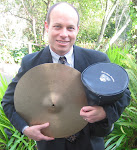Monday, August 16, 2010
My Dining Experience and Culture Change
I assumed that my childhood dining experience was the norm everywhere until I served, in my late 20s, as a counseling intern in a poor urban area of California. I co-facilitated a group of teens in a diversion program. Similar in philosophy to traffic school, the attendees avoided a worse alternative—juvenile hall—by attending sixteen sessions of group therapy. Most of the kids wanted to quickly get through the program and get on with their lives, but more than a few enjoyed engaging in macho posturing and making the therapist squirm. One time my partner went on vacation and I was on my own with seventeen teens, many of them well over 200 pounds with a recent history of low impulse control. My boss told me to call 911 if things got out of hand. Boy, that made me feel empowered! The group sensed my discomfort and I heard comments like, “I’d like to tear off, one by one, the fingers off that cop that hassled me.” “Have you ever done crack?” And my favorite, “Man, this group sucks.” Somehow I survived. Teaching high school was easy after these experiences.
One day I asked the group what they talked about at the dinner table. I received back seventeen blank stares. My more astute partner was familiar with inner city life, and asked, “How many of you eat dinner with your family at the same time?” None did. Instead they would grab something out of the refrigerator and eat it, in their room, alone. Taken aback, I realized that the family life of many inner city children was qualitatively different from mine. What glued these families together? Perhaps their family glue was less sticky than mine. My family’s dining experience was the centripetal force that held us together.
For my first seventeen years of my life, from birth to when I moved away to college, my family ate together whenever possible but especially at dinner. If someone was away or sick their presence would be missed. Dinnertime was when we kids told everyone about our day, usually what happened at school. Topics included who in class got in trouble for placing a tack on the “kiss up” girl’s chair; whether plants grow from the top or from the bottom; pi to ten digits; who got the weekly “room 13 citizen of the week” award; and who threw up during running drills in P.E. and who was forced to clean it up. If you weren’t talkative, you were angry at a family member or “something was wrong with you.” Religion and politics were also highly prized topics of discussion, and non-believers and political enemies were described in colorful and draconian terms as barbarians and evil-doers. Specifically, I remember a dinner time discussion that included the Vietnam War, President Nixon, and Eugene McCarthy after some Berkeley radical or reactionary tore off my father’s McCarthy for President bumper sticker. After a Christian missionary came to our door, we discussed a few differences between Christianity and our Judaism. I was a good son that agreed with his parents and as a devout junior Hasmonean and budding politician looked forward to dinnertime, hungry or not.
Indeed, when I started forming opinions of my own, the discussions became more heated. Our dinner table conversation would have made excellent court room training. We all used time-tested rhetorical techniques on each other, especially ad hominem attacks, and sarcastically questioned our opponent’s intelligence. Yet we children also learned that our opinions mattered and were valued and were taught how to think and retort quickly and sometimes cleverly.
Update:
My pulse quickened when I found a New York Times article, Why Does it Matter that Families Eat Together? Sam Sifton writes that this communal time inoculates family members somewhat from depression, drug use, obesity and teenage pregnancy. The children do better in school. Read the article here.
Subscribe to:
Post Comments (Atom)
Teacher by Day, Drummer by Night

Please recommend this blog to others
Popular Posts
-
Many students, grammar school to graduate school, dread writing large papers. However, if you know how to break down the task it becomes alm...
-
BF Skinner Carl Rogers This is a scholarly piece but worth the effort. Please read on... The book, Taking Sides (Noll, 2002) st...
-
I wrote this skit to illustrate how the evolution of art--its form, audience and production have changed. Form, audience, and production ha...




No comments:
Post a Comment